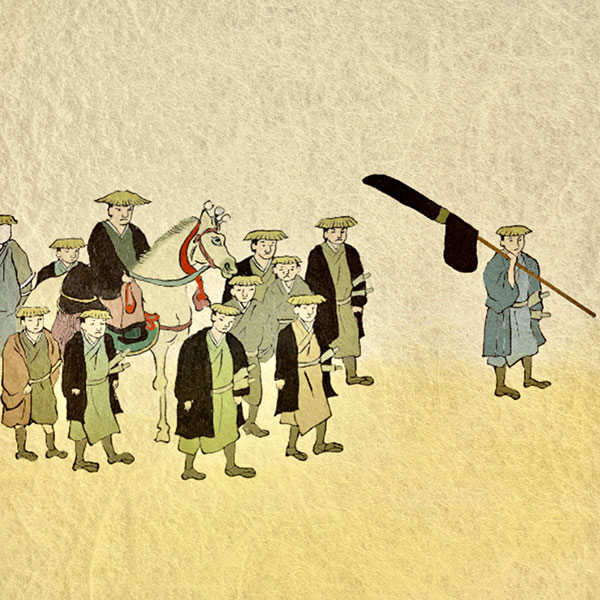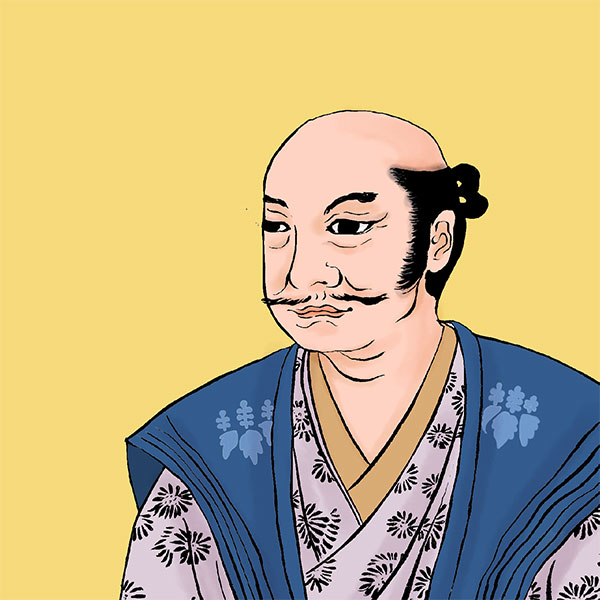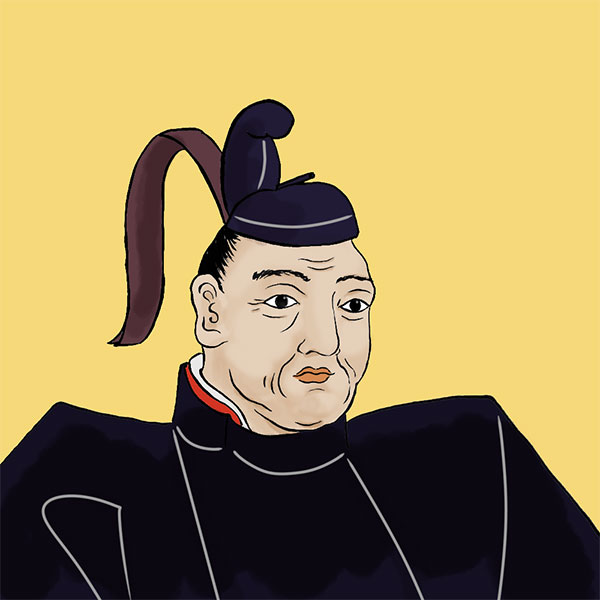Samurai laws (1/2)Edo period feudal lord control laws including the Genwa Rei

samurai laws
- Article category
- case file
- Incident name
- Samurai Laws (1615)
- place
- Tokyo
- Related castles, temples and shrines

Edo castle
- people involved
During the Summer Siege in Osaka in 1615, the Edo shogunate destroyed the Toyotomi family. Immediately after that, the second shogun, Hidetada Tokugawa, issued a set of 13 articles called ``Samurai Laws'' to feudal lords across the country. The first law that set the rules for daimyo was also called ``Genwa Rei'' from the time it was issued. After that, it was issued basically every time the shogun changed, and it was revised several times. The legal regulation of feudal lords during the Edo period was one of the reasons the Edo shogunate continued to exist for 260 years. This time, I will explain the ``Samurai Laws'' in an easy-to-understand manner.
What is “Buke Shodo”? Background and purpose
Samurai laws were laws issued by the Edo shogunate to control the feudal lords. Although it was promulgated by Hidetada Tokugawa, Tokugawa Ieyasu was behind it.
Even after the Eastern Army led by Ieyasu won the Battle of Sekigahara, unified the country, and established the Edo Shogunate, the Toyotomi family remained in power and the government remained unstable. However, as a result of the Osaka Winter Siege and Summer Siege, the Toyotomi head family collapsed in May 1615. Immediately after that, Ieyasu began formulating laws to control the daimyo. The era name changed from Keicho to Genwa on July 13 of the same year.
Why did Ieyasu proceed with enacting the law? This is because, in exchange for granting the feudal lords the right to rule over various parts of Japan, they bound the feudal lords by law and limited their power in order to maintain stable government management. Even though the Toyotomi head family had fallen, there were still feudal lords who favored Toyotomi, mainly in western Japan.
Before issuing various samurai laws, Ieyasu issued the ``One Country, One Castle Rei'' (Leap June 13). He ordered the feudal lords of the western region to destroy all castles in the country other than their residences. Although this was not a law, the feudal lords followed it and it gradually spread throughout the country.
The next law issued was Samurai Laws, one month later on July 7th. It is called ``Genwa Rei'' because the era was changed immediately after that. While various feudal lords gathered at Fushimi Castle, Suden Konchiin, a Rinzai sect monk who had drawn up the draft, read it out loud. Suden was the brainchild of Ieyasu and was responsible for everything from drafting bills and foreign policy to controlling religion, and was nicknamed the ``Prime Minister in Black.'' It is also said that it was related to the ``Hokoji Bell Incident,'' which led to the Osaka Winter Siege.
What is the content of the first samurai law "Genwa Rei"?
The Genwa Rei consisted of 13 articles, including 3 oaths taken from feudal lords by Ieyasu and Hidetada Tokugawa in 1611, and 10 articles drafted by Suden Konchiin. The contents are as follows. Each article had annotations.
- To work hard at the path of literature, martial arts, and archery (both literary and martial arts)
- To become addicted to alcohol, indulge in lewdness, and become bored with games such as gambling.
- Do not hide lawbreakers
- If there are traitors or murderers in the country, expel them immediately
- Do not let people from other countries live in your territory
- When repairing castles in various countries, be sure to notify. New construction is strictly prohibited.
- If there are any disturbing movements in neighboring countries or movements to form a clique, it must be reported to the shogunate as soon as possible.
- Marriages without permission from the Shogunate are prohibited.
- Regulations regarding etiquette for sankin kotai (number of people, etc.)
- dress appropriately for one's status
- People of low social status are not allowed to ride in palanquins.
- Samurai in various countries strive to be frugal and frugal.
- The ruler of the country should choose someone who can handle government affairs.
The prohibition on repairs and new construction of castles without permission in 6 is similar to the One Country One Castle Law, but it is a law to prevent the feudal lords from increasing their military power. In addition, the same rule regarding ``prohibition of marriage without the permission of the shogunate'' in item 8 existed during the Toyotomi Hideyoshi era. After Hideyoshi's death, Ieyasu broke the rules and repeatedly entered into political marriages to strengthen his faction, and Ieyasu probably forbade this because he was well aware of its influence.
There is also mention of sankin kotai, but it is not compulsory at this point. The sankin kotai referred to here was not intended for Edo, but seems to have been predicated on Kyoto sankin.
What happens if you violate samurai laws?
Samurai laws are the basis of the Shogunate's laws and regulations, and penalties are imposed if they are violated. Specifically, punishments were given, such as the removal of territory, reduction of territory, and transfer of territory, and the removal of territory and being forced to change countries.
Among the military commanders who were punished for violating these samurai laws, Masanori Fukushima is famous. At that time, he was the lord of the Hiroshima domain, which contained 500,000 koku of land in Aki Province (present-day western Hiroshima Prefecture) and Bingo Province (eastern Hiroshima Prefecture).
Hiroshima is famous for being damaged by typhoons in the fall, but a typhoon also made landfall in 1618. At this time, Hiroshima Castle was damaged, so Masanori reported to the shogunate that the castle should be repaired. However, it is difficult to listen to it. Masanori, who could not bear to see this, started repairing the castle without permission, repairing the Honmaru, Ninomaru, Sannomaru, and stone walls without permission. It seems that they were thinking of just reporting the matter to the Shogunate after the fact.
When the shogunate learned of this, it condemned the violation of samurai laws. However, the reform didn't work out right away, and he tried to make it work by asking Masanori to destroy the repaired parts other than the Honmaru, but Masanori destroyed only the Honmaru and left the other repaired parts as they were. Masu. In addition to this, Hidetada Tokugawa was furious due to continued violations such as delaying the departure of hostages who were supposed to be sent to Edo. In the end, Masanori had his 500,000 koku in Aki and Bingo provinces confiscated and transferred to Takai District (Nagano Prefecture) of Kawanakajima Four Districts in Shinano Province and Uonuma District in Echigo Province (Niigata Prefecture).
“Kuge Shōdo” issued at the same time as “Genwa Rei”
Samurai Shohto was aimed at feudal lords, but what was issued at the same time as the Genwa Rei was "Kuge Shohto" (later renamed to Kinchunan Kuge Shohto), which targeted court nobles. )is. It was issued by the Edo shogunate to control the imperial court and court nobles, and was drafted by Tokugawa Ieyasu in Konchiin Suden. On July 17th after the change of era, it was issued at Nijo Castle with the co-signatures of Ieyasu, the second shogun, Hidetada Tokugawa, and the second Kanpaku, Akizane Nijo. It consists of 17 articles and has remained almost unchanged throughout the Edo period.
- people involved

- WriterNaoko Kurimoto(Writer)I am a former travel industry magazine reporter. I have loved history, both Japanese and world history, since I was a child. I usually enjoy visiting temples and shrines, especially shrines, and often do ``pilgrimages to sacred places'' themed around historical figures. My favorite military commander is Ishida Mitsunari, my favorite castle is Kumamoto Castle, and my favorite castle ruins is Hagi Castle. My heart flutters when I see the ruins of battle castles and the stone walls of castle ruins.






